Table of Contents
Guide
Page List


Copyright 2021 by Kaplan, Inc., d/b/a Barrons Educational Series Copyright 2019, 2009 by Kaplan, Inc., d/b/a Barrons Educational Series under the title
Geometry: The Easy Way Prior editions Copyright 1997, 1990, 1984 by Kaplan, Inc., d/b/a Barrons Educational Series under the title
E-Z Geometry. All rights reserved under International and Pan-American Copyright Conventions. By payment of the required fees, you have been granted the non-exclusive, non-transferable right to access and read the text of this eBook on screen. No part of this text may be reproduced, transmitted, downloaded, decompiled, reverse engineered, or stored in or introduced into any information storage and retrieval system, in any form or by any means, whether electronic or mechanical, now known or hereinafter invented, without the express written permission of the publisher. Published by Kaplan, Inc., d/b/a Barrons Educational Series 750 Third Avenue New York, NY 10017
www.barronseduc.com ISBN: 978-1-5062-8145-2 10 9 8 7 6 5 4 3 2 1 Kaplan, Inc., d/b/a Barrons Educational Series print books are available at special quantity discounts to use for sales promotions, employee premiums, or educational purposes.
CONTENTS
Barrons Math 360: Geometry is designed for self-learners and for those looking for a comprehensive guide to everything geometry.
CONTENTS
Barrons Math 360: Geometry is designed for self-learners and for those looking for a comprehensive guide to everything geometry.
This book includes a number of helpful tools that will reinforce your knowledge of the topics as you learn. Youll find: What You Will Learn Each chapter begins with a list of the topics covered. This is a useful tool for categorizing the learning process and for devising a study plan. Terms and Definitions Important terms are defined where necessary to help guide you through topics successfully. Examples with Solutions Numerous examples for each topic are included throughout, along with answers to check your progress. Online Practice Questions Access to 50 online multiple-choice questions designed to enhance your understanding and to test your knowledge. Online Practice Questions Access to 50 online multiple-choice questions designed to enhance your understanding and to test your knowledge.
To access, see the card at the front of the book.
BARRONS 360 STUDY TIPS
SET GOALS AND OBJECTIVES
As you use
Barrons Math 360: Geometry, it is a good idea to set personal goals to chart and direct your learning objectives. A
goal is something that you wish to achieve over a period of time.
Objectives are short-term targets that help you reach a particular goal. For example, suppose that your goal is to learn how to find the area of various geometric shapes.
CUSTOMIZE YOUR STUDY
Barrons Math 360: Geometry does not need to be studied in a linear fashion.
CUSTOMIZE YOUR STUDY
Barrons Math 360: Geometry does not need to be studied in a linear fashion.
If there is a particular topic that you want to study or reinforce, just turn to that page or chapter, and all the information along with the features mentioned above will be available to you. There are also some things you can do to optimize your study time and ensure you are retaining the important information you want to learn.
Before You Read
Review: Review all chapter headings and subheadings and the information in the What You Will Learn section.
Scan: Glance over any illustrations, tables, or graphs in the chapter youll be reading.
Locate Terms and Definitions: Read any bold or italicized words, and study their definitions.
While You Read
Predict: Try to predict the answers to the questions in the Practice Exercises.
While You Read
Predict: Try to predict the answers to the questions in the Practice Exercises.
This will help flag important information to keep an eye out for as you read. Read Aloud: Hearing what is written on the page leads to better comprehension and retention of information. Visualize: Developing a picture in your mind of the information, concepts, or material presented makes it much easier to remember.
Highlighting and Note Taking
Identify Important Facts: Dont overhighlight. This will have the opposite effect and actually negatively impact your ability to retain the information you need to remember.
Draw It Out: Sketch out pictures, graphs, diagrams, or tables to help visualize what youre reading.
Draw It Out: Sketch out pictures, graphs, diagrams, or tables to help visualize what youre reading.
This is particularly helpful with complex topics.
After You Read the Chapter
Talk It Out: Summarize what you have learned from the chapter aloud to a friend or a family member. Explain it as if they are learning it for the first time.
Answer the Questions in the Practice Exercises: Did you need to look them up, or were you able to answer them from memory?
Reinforce: If you found yourself having to look up the answers to the questions, go back and read those portions of the chapter again until you feel confident moving on to the next chapter.
Good luck!
WHAT YOU WILL LEARN
Studying geometry is very different from studying elementary algebra. In geometry, we are concerned with developing a logical structure in which mathematical relationships are
proved as well as
applied.
In this chapter you will learn: some basic terms and assumptions of geometry; the nature of geometric proofs; the type of mathematical reasoning that forms the basis of this course. SECTIONS IN THIS CHAPTER
Studying geometry is, in a sense, like building a house. Geometry uses logical reasoning as the cement and the following types of statements as the basic building blocks: UNDEFINED TERMS. Some terms are so fundamental that they cannot be defined using simpler terms.
Point, line, and
plane are undefined terms in geometry. Although these terms cannot be defined, they can be described.
DEFINED TERMS. New terms can be defined using undefined as well as previously defined terms, thereby creating an expanding dictionary of terms that makes it easier to describe geometric figures and relationships. POSTULATES. Some beginning principles in geometry, called postulates, are so basic that they cannot be arrived at using simpler facts. A postulate is a statement that is accepted without proof. THEOREMS. THEOREMS.
Unlike a postulate, a theorem is a generalization that can be proved to be true. Prove simply means presenting a valid argument that uses a set of known facts and logical reasoning to show that a statement is true. The familiar fact that The sum of the measures of the three angles of a triangle is 180 is a theorem. Geometry is an example of a postulational system in which a beginning set of assumptions and undefined terms is used as a starting point in developing new relationships that are expressed as theorems. These theorems, together with the postulates and defined and undefined terms, are used to

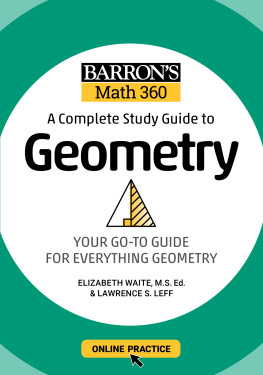
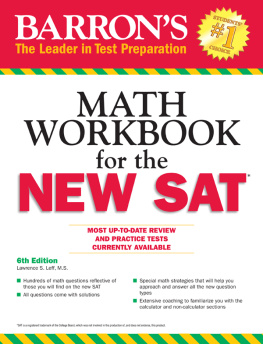
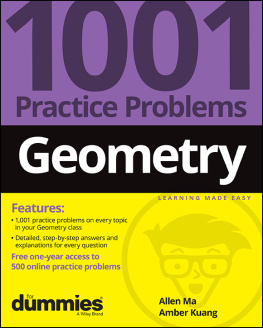
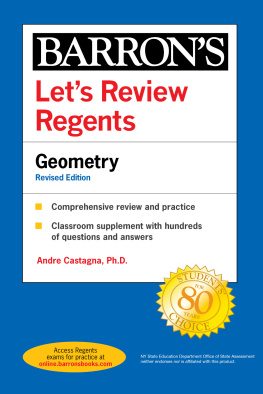
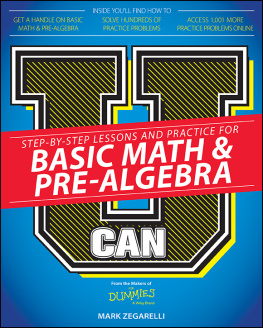
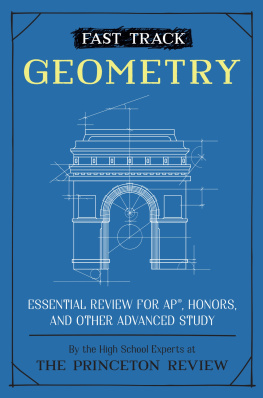
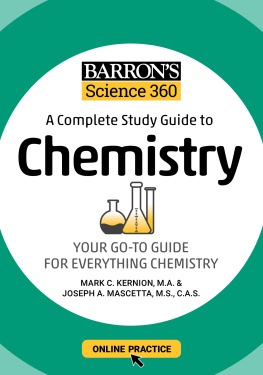


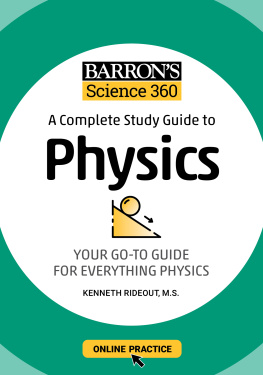

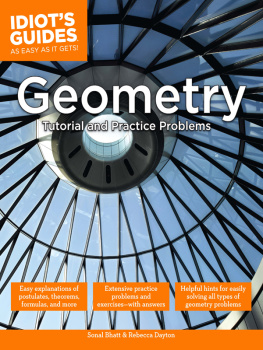


 Copyright 2021 by Kaplan, Inc., d/b/a Barrons Educational Series Copyright 2019, 2009 by Kaplan, Inc., d/b/a Barrons Educational Series under the title Geometry: The Easy Way Prior editions Copyright 1997, 1990, 1984 by Kaplan, Inc., d/b/a Barrons Educational Series under the title E-Z Geometry. All rights reserved under International and Pan-American Copyright Conventions. By payment of the required fees, you have been granted the non-exclusive, non-transferable right to access and read the text of this eBook on screen. No part of this text may be reproduced, transmitted, downloaded, decompiled, reverse engineered, or stored in or introduced into any information storage and retrieval system, in any form or by any means, whether electronic or mechanical, now known or hereinafter invented, without the express written permission of the publisher. Published by Kaplan, Inc., d/b/a Barrons Educational Series 750 Third Avenue New York, NY 10017 www.barronseduc.com ISBN: 978-1-5062-8145-2 10 9 8 7 6 5 4 3 2 1 Kaplan, Inc., d/b/a Barrons Educational Series print books are available at special quantity discounts to use for sales promotions, employee premiums, or educational purposes.
Copyright 2021 by Kaplan, Inc., d/b/a Barrons Educational Series Copyright 2019, 2009 by Kaplan, Inc., d/b/a Barrons Educational Series under the title Geometry: The Easy Way Prior editions Copyright 1997, 1990, 1984 by Kaplan, Inc., d/b/a Barrons Educational Series under the title E-Z Geometry. All rights reserved under International and Pan-American Copyright Conventions. By payment of the required fees, you have been granted the non-exclusive, non-transferable right to access and read the text of this eBook on screen. No part of this text may be reproduced, transmitted, downloaded, decompiled, reverse engineered, or stored in or introduced into any information storage and retrieval system, in any form or by any means, whether electronic or mechanical, now known or hereinafter invented, without the express written permission of the publisher. Published by Kaplan, Inc., d/b/a Barrons Educational Series 750 Third Avenue New York, NY 10017 www.barronseduc.com ISBN: 978-1-5062-8145-2 10 9 8 7 6 5 4 3 2 1 Kaplan, Inc., d/b/a Barrons Educational Series print books are available at special quantity discounts to use for sales promotions, employee premiums, or educational purposes.